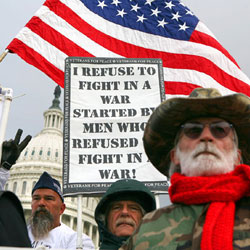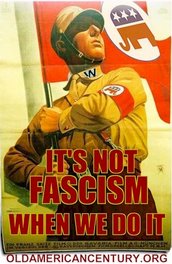A Lesson from History
My picture of World War I had always been that of most people, I imagine: mustard gas, atrocities, bodies in trenches. This program shook my perceptions.
Until WW I, wars in Europe had been fought differently than they are today. The people you were fighting were your opponents. The idea that your antagonists were evil wasn’t the norm. There were state reasons for battle. The rulers told the people to come to a certain place and fight—and the people came to a certain place and fought. Case closed.
Then, about the beginning of the 20th century, the way war was waged changed. The High Commands of both the British and the Germans put forth propoganda in the weeks and months leading up to the war.
Both sides were told by the press, ‘Your enemies bayonet babies, rape women. They are ruthless.’ The editorial pages on both sides were full of cartoons depicting skeletons being stabbed with swords and bayonets. Almost everyone on both sides simply believed what the press told them. This was the atmosphere in which WW I began.
*_*_*
Then, on the first Christmas Eve night of the war, the British soldiers on the edge of no-man’s land heard a sound they couldn’t identify. As they concentrated, someone recognized it. It was the melody of Silent Night—but sung in a language most of them didn’t understand. It was German. The British boys first thought it was some sort of trick—but, eventually, they joined in the singing. The voices floated back and forth between the two battle-lines. That was the beginning of the ‘little peace’.
[see link for the rest of the article.]
Subscribe to:
Post Comments (Atom)

































1 comment:
I watched a special on this on the History Channel. Some of the troops refused to stop mingling. Others refused to fire on the other side. Finally, to break it up, A British officer took a rifle form a soldier who had just refused to fire, and started shooting unarmed Germans as the mingled.
A holiday truce would be wonderful.
Post a Comment